Need a center fielder? Cody Bellinger, the 2019 National League MVP, is on the market and available after the Dodgers declined to tender a contract offer for 2023.
According to agent Scott Boras, Bellinger prefers a one-year contract for 2023 to reestablish his value before going back into the free-agent market for 2024. Bellinger, who turns 28 in July, is attempting to return to full form offensively after two consecutive seasons of light hitting. After dislocating his right shoulder multiple times during the 2020 season, Bellinger underwent surgery soon after the Dodgers won the ‘20 World Series.
“I’ve already been offered multi-years,” Boras told The Athletic. “Most likely, because of his age, we don’t want a multi-year.”
During the recent GM meetings in Las Vegas, Boras was emphatic on one point: Bellinger’s offensive collapse wasn’t about skill. Boras attributed it to a lack of strength in Bellinger’s repaired shoulder. Bellinger is busy working to improve the shoulder’s sturdiness this offseason.
There appears to be considerable interest in Bellinger. I assume the Cardinals would at least make an inquiry to explore what Bellinger-Boras are looking for. Does this mean the Cardinals are jacked up to pursue Bellinger on a one-year deal? I don’t know.
Quality center fielders aren’t easy to find, and Bellinger was one of the best all-around players in the game in 2019. That season he was voted NL MVP, won a Gold Glove and a Silver Slugger and was named to the NL All-Star team for the second time.
That season Bellinger batted .305 with a .1035 OPS, 47 homers and 115 RBIs. With a 167 OPS+, Bellinger was 67 percent better than the league average offensively in ‘19.
Four seasons into his career (2017-2020) Bellinger had a .547 slugging percentage, .911 OPS, was 40 percent above league average offensively in OPS+, and was clubbing a homer every 14.6 at–bats.
But in the post-surgery of his career … yikes.
Since the start of the 2021 season, 151 major-league hitters have at least 900 plate appearances, same as Bellinger. Here’s where he ranks among the 151 in key categories offensively:
– 150th in batting average .193
– 151st (last) in onbase percentage (.256)
– 146th in slugging pct. (355)
– 151st in OPS (.611)
– 151st in OPS+ (65)
– 151st in wRC+ (69)
Oh, boy. That’s really ugly.
Over his first four seasons Bellinger had a strikeout rate of 21.4 percent and walked on 12.3% of his plate appearances. Over the last two seasons Bellinger’s strikeout rate increased to 27 percent, and his walk rate dropped to 8.2%.
As for Bellinger’s Statcast hitting profile … Well, there’s a lot of blue in there. Deep blue. And a hitter with too many deep-blue areas in his color-coded profile is a sign of trouble.
Two quick examples: in 2019 Bellinger had a robust hard-hit rate of 46 percent. In 2022, his hard-hit rate was 38 percent. His average exit velocity last season (89.4 mph) shows that he’s tapered off from his 2019 level – but isn’t terrible.
In fairness to Bellinger, there were positive indicators in 2022, improving his 2021 hitting performance in virtually every area. It doesn’t mean that his 2022 offense was good; it was not. But perhaps these numbers reveal something about his shoulder and a trend in the right direction.
Compared to 2021 …
Bellinger improved 25 points in OBP and 31 points in batting average. He went up 87 points in slugging, and 112 points in OPS. His hard-hit was up by nearly four percent.
Bellinger’s Isolated Power number – an important stat – went from .137 in 2021 to .179 this past season, a rise of 42 points. Not only that, but his .179 ISO was well above the MLB-wide average of .152
Bellinger’s wRC+ was up 36 points from 2021. And in 2022 Bellinger homered every 26.5 at bats, an improvement over his 31.5 home-run ratio in ‘21.
Bellinger – who bats from the left side – was below league average in each of the areas I just mentioned. But if you’re looking for encouraging signs, you can find them. Another example: in 2021, Bellinger was 40 percent below league average offensively against right-handed pitchers. In 2022, he was only eight percent below average against RHP. And his slugging percentage against righties went from .349 in 2021 to .412 in 2022. Is the shoulder getting stronger?
There are other red flags, however. His plate discipline has eroded and he must tighten that up. His launch angle appears to be off; over the past two seasons he’s gotten under the ball at a much higher rate of contact, 36.2 percent. In his peak season (2019) Bellinger made “under” contact at a rate of 27.5 percent. Translation: over the last two seasons there have been too many harmless fly balls.
Perhaps some fixes can be made. Current Cardinals batting coach Turner Ward was the Dodgers’ hitting coach for Bellinger’s first two MLB seasons, 2017 and ‘18. And Bellinger did well, performing 31 percent above league average offensively per OPS+.
The team that signs Bellinger will be getting an outstanding baserunner. According to Bill James, Bellinger has a net baserunning gain of +72 in his career including a +20 this past season. And his career stolen-base success rate is a fantastic 82 percent.
There are mixed reviews on his defense – Statcast gives him much higher marks than Fielding Bible – but the bottom line is fine. In all likelihood, Bellinger would be no worse than league average defensively in center. And probably slightly above average.
Other than my mention of Turner Ward, I’m not trying to do any matchmaking here between the Cardinals and Bellinger. Again, it’s almost always a waste of time to make an attempt to gauge the Cardinals’ interest in a player, and they don’t leak to local media unless they’re seeking a favor. But we do know that the Cardinals are seeking a LH bat – John Mozeliak has said that repeatedly – and Bellinger has played all three outfield positions plus first base.
Signing Bellinger to a one-year deal would minimize risk. The Dodgers non-tendered Bellinger because they didn’t want to pay as much as $18 million to $20 million – his expected salary estimate for his final year of arbitration. The Dodgers want Bellinger back, but at a lower cost.
Bellinger should have plenty of appealing options. To give himself his best chance of erasing concerns about him, it would make sense for Bellinger to set up in a hitter-friendly ballpark to turbo-boost his power numbers. In that context, Busch Stadium isn’t ideal.
When Bellinger had his big season in 2019, Statcast shows that 11 of his 47 homers wouldn’t have landed as home runs at Busch. Over the last two seasons, Bellinger has 30 total home runs and 24 would have left Busch. Any number of home ballparks would enhance Bellinger’s HR total – not suppress it.
If the Cardinals have genuine interest in Bellinger, then he’d be an interesting candidate. A bounce-back season in 2023 is plausible. Shoulder problems are tricky and not easily solved, and Bellinger’s red flags are obvious. But it’s also true that his incremental improvement in 2022 offers optimism. That’s easy for me to say — but what if Bellinger doesn’t hit in 2023? That’s the scary part, even on a one-year agreement.
I’d be willing to take a one-year flyer on Bellinger.
On the other hand…
Imagine having a 26-man roster in 2023 that includes Bellinger and Paul DeJong, two guys that each posted a bottom-11 OPS in the majors over the past two seasons.
The Cardinals need more of a sure thing.
Ah, but then again, the St. Louis front office knows that it can win the NL Central in 2023 without doing a thing.
Thanks for reading …
–Bernie
Bernie invites you to listen to his opinionated sports-talk show on 590-AM The Fan, KFNS. It airs Monday through Thursday from 3-6 p.m. and Friday from 4-6 p.m. You can listen by streaming online or by downloading the show podcast at 590thefan.com or the 590 app which is available in your preferred app store.
Follow Bernie on Twitter @miklasz
All stats used here were sourced from FanGraphs, Baseball Reference, Stathead, Bill James Online, Fielding Bible, Baseball Savant, Brooks Baseball Net and Spotrac.
For the last 36 years Bernie Miklasz has entertained, enlightened, and connected with generations of St. Louis sports fans.
While best known for his voice as the lead sports columnist at the Post-Dispatch for 26 years, Bernie has also written for The Athletic, Dallas Morning News and Baltimore News American. A 2023 inductee into the Missouri Sports Hall of Fame, Bernie has hosted radio shows in St. Louis, Dallas, Baltimore and Washington D.C.
Bernie, his wife Kirsten and their cats reside in the Skinker-DeBaliviere neighborhood of St. Louis.



